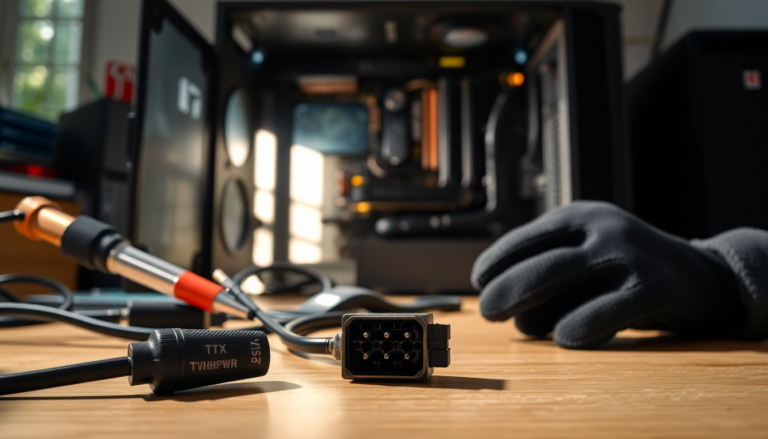Argomenti trattati
In the world of high-performance gaming, the RTX 4090 has made waves, but not all the feedback is positive. The infamous 16-pin (12VHPWR) power connector has raised concerns among users, with reports of melting becoming a common nightmare. Though the frequency of these incidents has lessened, they haven’t disappeared entirely. A recent case on Reddit revealed the lengths some owners are going to in order to prevent their cards from falling victim to this issue.
Users take matters into their own hands
A Reddit user, known as malcanore18, shared a troubling experience where the 16-pin connector on their RTX 4090 melted. To combat further dangers, they devised a DIY solution by incorporating six miniature fuses into their power cable. The aesthetics of the fix might leave something to be desired, but the concept is intriguing. If one pin starts drawing excess power, the corresponding fuse is designed to blow, potentially preventing a catastrophic failure. While this workaround may seem rudimentary, it’s worth noting that replacing a blown fuse is far less expensive than repairing a damaged graphics card. Another user chimed in with the suggestion of employing resettable fuses, which automatically reset after being triggered, thus saving the hassle of manual replacement.
Creative, if risky, alternatives
Interestingly, the threads on Reddit also showcased a variety of approaches to the problem. For example, user jlodvo tackled the issue head-on by opting for a more radical method: he had someone remove the power connector entirely and soldered the wires directly to the graphics card. It’s a bold move, but it works under the condition that the user has a modular power supply allowing for easy disconnection. This method may sound daunting to the average user, but it certainly reflects the lengths to which some enthusiasts will go to protect their investments.
Reverse engineering as a solution
Then there’s IMI4tth3w’s story, which involves a melted 16-pin connector on an L40 card, a situation partly caused by a faulty third-party cable. They detailed how they removed the damaged connector and reverse-engineered the wiring to adapt two standard 8-pin PCIe power connectors instead. However, it’s essential to remember that this approach may not be universally applicable. The L40, a data center graphics card, seems to have a unique setup that allows for this modification. As many know, not all GPUs are built the same, so what works for one model might not work for another.
The ongoing concern over power connector failures
It’s frustrating that such issues persist, especially when dealing with high-end Nvidia graphics cards that often come with a hefty price tag. There are numerous theories circulating about the root causes of these meltdowns, but Nvidia has yet to provide a conclusive explanation. In the meantime, anxiety lingers among owners of the RTX 4090 and the anticipated RTX 5090, who can’t shake the fear of that telltale smell of burning plastic wafting from their prized possessions. It’s a reality that many in the gaming community have come to accept, albeit reluctantly.
Manufacturers respond to the crisis
In response to these ongoing challenges, both graphics card and power supply manufacturers have rolled out measures to mitigate risks. They’ve introduced colored connectors to aid in proper insertion and incorporated sensors within power supplies to alert users of potential issues. Still, the DIY solutions being shared within the community are a testament to the resolve of gamers—despite the risks, they refuse to abandon their expensive gear. But, a word of caution: unless you’re experienced in hardware modifications, these user-generated fixes can be risky business. They might be neat, but they also come with the potential for further complications.

